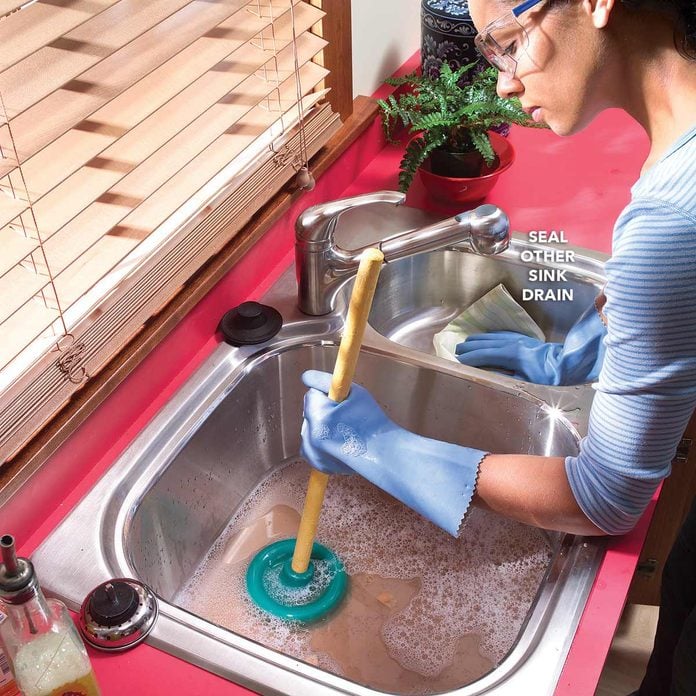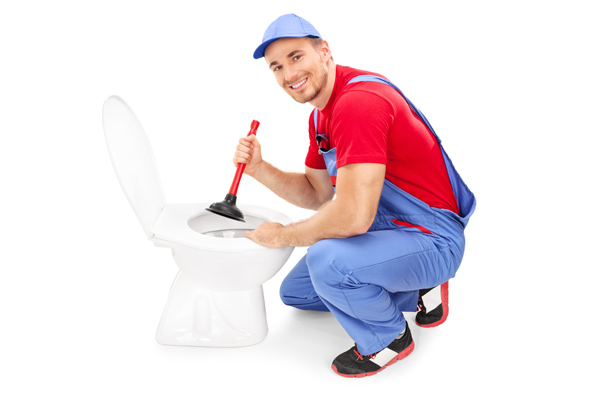Master Plungers and Drain Cleaner Techniques: Specialist Tips
Master Plungers and Drain Cleaner Techniques: Specialist Tips
Blog Article
Every person seems to have their personal opinion involving How to Use a Plunger to Unclog a Toilet or Drain.

Intro
Proper maintenance of family drains is necessary for avoiding blockages and making certain smooth water circulation. Among the trick tools in every property owner's toolkit is the bettor, together with different drainpipe cleansers created to take on persistent obstructions efficiently. This write-up checks out just how to make use of plungers and drainpipe cleaners efficiently to keep your drains pipes moving easily.
Section 1: Understanding Bettors
Kinds of Plungers
There are several sorts of bettors readily available, each designed for various sorts of drains and clogs. One of the most common kinds consist of cup bettors, flange bettors, and accordion bettors.
How Plungers Work
Plungers service the concept of developing stress and suction to displace obstructions. When appropriately applied over a drainpipe, they produce a vacuum cleaner that can take out particles or break up obstructions.
Choosing the Right Bettor
Picking the appropriate plunger relies on the type of drainpipe and the nature of the clog. Mug plungers are perfect for sinks and tubs, while flange bettors are better fit for commodes as a result of their design.
Common Mistakes with Bettors
Staying clear of these mistakes makes certain reliable plunging: improper seal around the drainpipe, not enough force, and not clearing surrounding particles.
Area 2: Making Use Of Plungers Successfully
Preparation
Prior to plunging, make sure the bettor covers the drainpipe entirely and creates a limited seal. Clear any kind of noticeable particles around the drainpipe opening.
Strategy
Beginning with gentle plunging movements to build suction. Increase stress progressively, utilizing a constant rhythm. Repeat as needed till the drain clears.
Repairing Tips
If diving does not work, attempt changing the seal, using oil jelly for a much better seal, or using a different sort of bettor.
Section 3: Understanding Drain Cleaners
Kinds Of Drainpipe Cleaning Company
Drain pipes cleaners can be chemical or chemical. Chemical cleansers use solid chemicals to dissolve blockages, while chemical cleansers use all-natural enzymes to break down raw material.
Just How Drain Cleaning Company Work
Chemical cleansers react with obstructions to liquify them, while enzymatic cleaners break down natural products like hair and oil without harming pipes.
Safety Considerations
Always put on handwear covers and eye defense when making use of chemical drainpipe cleaners. Make sure appropriate ventilation and follow manufacturer instructions carefully.
Eco-Friendly Alternatives
Take into consideration making use of vinegar and baking soda or enzyme-based cleansers for environment-friendly choices that are more secure for pipes and the environment.
Area 4: Using Drainpipe Cleaners Properly
Application Techniques
Put chemical cleaners straight right into the drain opening. Permit them to work for the suggested time prior to flushing with hot water. Chemical cleaners ought to rest over night.
Precautions
Prevent blending various types of cleaners, as this can create harmful fumes. Never ever use chemical cleaners along with a plunger, as spilling can take place.
Taking Care Of Persistent Obstructions
For consistent clogs, consider utilizing a plumbing snake or calling an expert plumbing to prevent damage to pipes.
Conclusion
Finally, recognizing just how to utilize plungers and drain cleansers successfully is necessary for preserving healthy pipes systems. By selecting the right tools and strategies, house owners can tackle small clogs and protect against major pipes problems down the line.
How To Properly Use A Plumbing Snake To Clear Drains
When any drain clogs in our home arise, we tend to gravitate toward the plunger and little else. In cases where the plunger and its vacuum-created pressure are not able to clear clogs, many immediately move to harmful chemicals or simply call their plumber to fix the issue.
we’re happy to help with all drain cleaning needs and concerns. This includes informing you on a few other home remedies you may have at your disposal for minor to moderate clogs, one of which is the use of a plumbing snake. Many people have never used one of these before – let’s go over the steps to take when your drain clogs and you have a plumbing snake available.
Attempt Plunger Use
The first step here, as we noted above, should indeed be to grab your plunger when you notice a drain clog and attempt to resolve it this way. If you’re unsure how to use a particular type of plunger, our plumbers can answer any questions you have. If this doesn’t do the trick, however, you move on to the snake.
Locate And Prepare Snake
A plumbing snake is a metal or plastic device that’s generally about a quarter of an inch thick. It’s design with significant extensions, meant to reach down into your clogged drain and push the clog out. Snakes also contain drain augers that will latch onto and push stubborn blockages.
If your plunger doesn’t clear a clog, locate your snake and bring it to the drain in question. We also recommend keeping a bucket nearby to collect the clog once you pull it out, plus we’d advise wearing goggles and possibly protective gloves.
Feed Snake
Once you’re ready to go, feed the snake slowly down the drain, using the crank device it comes with to keep it moving until it finds the clog. Once this happens, much of the clog will be latched onto the coil so you can pull it out, while the rest will simply break up and flow downward.
Detach Debris
Remove the snake slowly from the drain, and once you’ve done so, pick off any debris that’s stuck to the coil. This is another area where wearing gloves is a must.
Flush Drain
Finally, take a few minutes to ensure the snake has done its job correctly. If you’ve been using it on a toilet, flush the toilet a couple times and make sure everything flows well. If you’ve used it on a different drain, flush it with some room temperature water.
https://www.mybuddytheplumber.com/blog/how-to-properly-use-a-plumbing-snake-to-clear-drains/

Application Techniques
Put chemical cleaners straight right into the drain opening. Permit them to work for the suggested time prior to flushing with hot water. Chemical cleaners ought to rest over night.
Precautions
Prevent blending various types of cleaners, as this can create harmful fumes. Never ever use chemical cleaners along with a plunger, as spilling can take place.
Taking Care Of Persistent Obstructions
For consistent clogs, consider utilizing a plumbing snake or calling an expert plumbing to prevent damage to pipes.
Conclusion
Finally, recognizing just how to utilize plungers and drain cleansers successfully is necessary for preserving healthy pipes systems. By selecting the right tools and strategies, house owners can tackle small clogs and protect against major pipes problems down the line.
How To Properly Use A Plumbing Snake To Clear Drains
When any drain clogs in our home arise, we tend to gravitate toward the plunger and little else. In cases where the plunger and its vacuum-created pressure are not able to clear clogs, many immediately move to harmful chemicals or simply call their plumber to fix the issue.
we’re happy to help with all drain cleaning needs and concerns. This includes informing you on a few other home remedies you may have at your disposal for minor to moderate clogs, one of which is the use of a plumbing snake. Many people have never used one of these before – let’s go over the steps to take when your drain clogs and you have a plumbing snake available.
Attempt Plunger Use
The first step here, as we noted above, should indeed be to grab your plunger when you notice a drain clog and attempt to resolve it this way. If you’re unsure how to use a particular type of plunger, our plumbers can answer any questions you have. If this doesn’t do the trick, however, you move on to the snake.
Locate And Prepare Snake
A plumbing snake is a metal or plastic device that’s generally about a quarter of an inch thick. It’s design with significant extensions, meant to reach down into your clogged drain and push the clog out. Snakes also contain drain augers that will latch onto and push stubborn blockages.
If your plunger doesn’t clear a clog, locate your snake and bring it to the drain in question. We also recommend keeping a bucket nearby to collect the clog once you pull it out, plus we’d advise wearing goggles and possibly protective gloves.
Feed Snake
Once you’re ready to go, feed the snake slowly down the drain, using the crank device it comes with to keep it moving until it finds the clog. Once this happens, much of the clog will be latched onto the coil so you can pull it out, while the rest will simply break up and flow downward.
Detach Debris
Remove the snake slowly from the drain, and once you’ve done so, pick off any debris that’s stuck to the coil. This is another area where wearing gloves is a must.
Flush Drain
Finally, take a few minutes to ensure the snake has done its job correctly. If you’ve been using it on a toilet, flush the toilet a couple times and make sure everything flows well. If you’ve used it on a different drain, flush it with some room temperature water.
https://www.mybuddytheplumber.com/blog/how-to-properly-use-a-plumbing-snake-to-clear-drains/

As a passionate reader about , I think sharing that piece of content was important. Enjoyed our content? Please share it. Let another person discover it. Many thanks for being here. Return soon.
Click Here Report this page